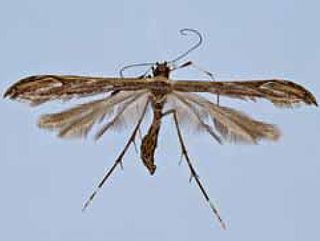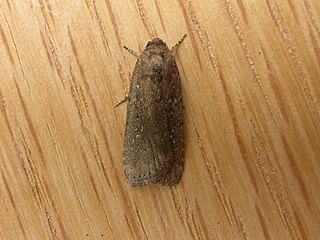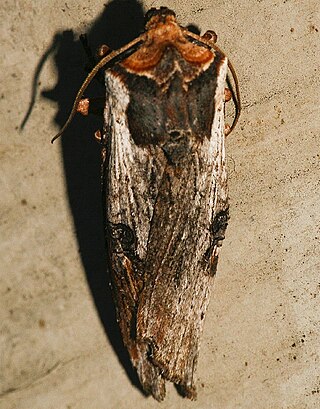
The Pyralidae, commonly called pyralid moths, snout moths or grass moths, are a family of Lepidoptera in the ditrysian superfamily Pyraloidea. In many classifications, the grass moths (Crambidae) are included in the Pyralidae as a subfamily, making the combined group one of the largest families in the Lepidoptera. The latest review by Eugene G. Munroe and Maria Alma Solis retain the Crambidae as a full family of Pyraloidea.

The Chinese bamboo partridge is a small Galliform bird. It is one of three species in the genus Bambusicola, along with the mountain bamboo partridge of the Himalayas, and the Taiwan bamboo partridge of Taiwan. Chinese bamboo partridge is a monotypic species.

Athetis is a genus of moths of the family Noctuidae. The genus was erected by Jacob Hübner in 1821.

Athetis pallustris, the marsh moth, is a moth of the family Noctuidae. It is found in most of Europe, the southern Urals, southern Russia, Ukraine, eastern Turkey, Siberia, the Amur region, the Russian Far East, Mongolia and northern China.
Athetis nonagrica is a moth of the family Noctuidae. It is found in Borneo, Peninsular Malaysia, Sulawesi and New Guinea.

Hellinsia beneficus is a moth of the family Pterophoridae. It is native to Mexico, but was introduced to Hawaii in 1973 as a biological control agent against mistflower, Ageratina riparia.

Athetis tenuis is a moth of the family Noctuidae. It is known from all of Australia, including Norfolk Island as well as New Zealand.

Athetis maculatra is a species of moth of the family Noctuidae. It is found in Australia.

Harpocera thoracica is a species of bugs from Miridae family.

Athetis reclusa is a moth of the family Noctuidae first described by Francis Walker in 1862. It is found from Sundaland to New Caledonia and Fiji. The habitat consists of open areas from sea level up to 1,200 meters.

Athetis hospes, or Porter's rustic, is a moth of the family Noctuidae which was described by Christian Friedrich Freyer in 1835. It is found in Spain, southern France, Italy, on the Balkan Peninsula, Crete, Turkey and northern Iran. The species seems to be expanding its range in north-western Europe with records from Great Britain and the Netherlands.

Athetis tarda, the slowpoke moth, is a moth of the family Noctuidae. It is found in North America, where it has been recorded from New Hampshire to Florida and from Missouri to Texas. The habitat consists of oak woodlands.

Xylena thoracica, the acadian swordgrass moth, is a species of cutworm or dart moth in the family Noctuidae. It is found in North America.
Athetis hongkongensis, the Hong Kong marsh moth is a noctuid moth found in Hong Kong. The species was first described by Anthony Galsworthy in 1997.

Athetis lepigone is a species of moth, belonging to the genus Athetis.
This page is based on this
Wikipedia article Text is available under the
CC BY-SA 4.0 license; additional terms may apply.
Images, videos and audio are available under their respective licenses.













